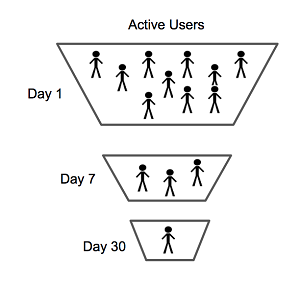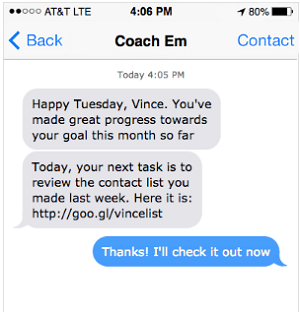ATD Blog
The Choose-to-Engage Barrier: Why Chat Bots Are an Effective Alternative to Apps
Tue Dec 12 2017

The value proposition for rich-media solutions like apps and websites for corporate learning support is appealing because the user experience looks great and feels intuitive. And the user interface design of an app or website lends itself to practical organization of content and functionality in one easy-to-navigate place.
However, the inherent challenge with any app or website is that they are, by nature, a destination, and therefore success is contingent in being able to get learners to consistently return and engage. All too commonly, after the initial burst of excitement, app activity can fall off quickly, with only a small percentage of users staying actively engaged. Organizations that are looking to buy or build apps to help train, motivate, teach, and engage their employees should think twice before making this investment.
Enterprises want to leverage proven app techniques to engage their target audience, but often their analysis is comparing apples to oranges. The average adult in the United States has 37 apps on their phone, but 80 percent of their usage is dedicated to just three of those apps, according to a 2016 Internet trends presentation by Mary Meeker. And what are those apps? Most commonly, Facebook, Chrome, and YouTube. These are not productivity tools but personal, “time-wasting” tools, where the main value proposition is antiboredom, not self-improvement.

For productivity tools, the requirement of the user needing to choose to log in to check their next task is too much to ask for when competing with YouTube videos, social media alerts, and the like. I call this the choose-to-engage barrier. It is likely that most enterprises have had some experience with this. In fact, think of the most recent app rollout you’ve been a part of. Were the usage statistics something like this?
This type of engagement attrition is all too familiar. And what can make it even more infuriating is that users themselves will assuredly claim that they want to use the tool and they readily recognize the need for it to accomplish the goals they have for themselves. Indeed, we know that most users want to learn and want to change their behavior, which is why they download and engage with an app in the first place.
They want to do it; they just don’t.
I have found the best mitigation for the choose-to-engage barrier is turning to chat bots. Chat bots remove the requirement of logging in to an app to find your next task, and replace it with a simple conversation. By engaging the learner where they already are (text messaging with friends and colleagues), you more immediately and consistently get the learner’s mind engaged in a reflective learning moment.

Well-designed chat bots that are programmatic (which means they push out coaching messages) stimulate thought, reflection, and accountability, and can drive the new actions and behaviors you are trying to accomplish with your training programs. I’ve found chat bots particularly useful in sending content reminders, issuing challenges to put training into action, following up with learner goals, providing on-demand performance support, and assessing the progress (or lack thereof) of the learner, in addition to being an effective survey tool.
Some learning professionals might wonder whether learners would be willing to converse with a computer. The answer is they absolutely will if the conversation is valuable to them. The key, therefore, in designing an effective learning chat bot is to program it to feel valuable to the user. This design should also take into consideration how busy learners are, what time of day is best to message them, how frequently to message them, and how to word the messages so that the learner is glad to receive them. Finding the right balance may take an iteration or two, but once you crack the code, you’ll find that a chatbot is the single most effective way to automate training reinforcement and sustainment across your workforce.
Want to learn more? Join me at ATD TechKnowledge 2018 for the session Chat Bots: A Practical Use of Artificial Intelligence to Aid Corporate Learning, which is part of the Emerging Tech track.
You've Reached ATD Member-only Content
Become an ATD member to continue
Already a member?Sign In
